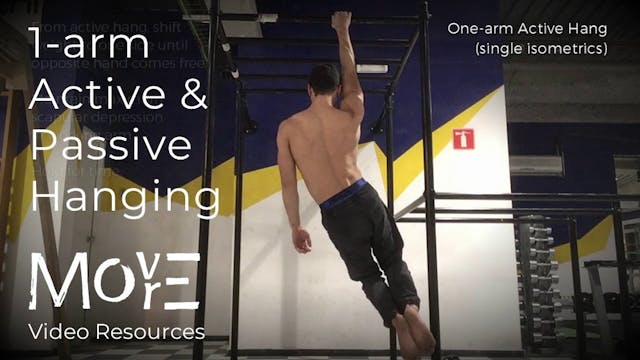'False-grip' (FG) Development
SASS pull (vertical & horizontal)
•
45s
THE WHAT:
'False-grip' (FG) development is oriented around two connected capacities: mobility, and strength development. This is because the 'FG' is mechanically at its strongest when a toward 90° angle of wrist-flexion is available when gripping the rings (i.e. it is maximally "closed"), but at the same time the strength of the forearm flexors will ultimately be the limiting factor determining maximal-capacity.
For these reasons, these various hanging variations serve as auxiliary training for those purposes, whilst at the same time developing experience of holding the FG at different range of ELBOW-flexion.
LEARN MORE (subscriber-only):
https://drive.google.com/file/d/1kviG3jxsgHLJwhfvp3qk6AF-7vXfMEU8/view?usp=drive_link
_____________________
For programming, guidance, & support for your physical practice:
FREE fundamental prehabilitation program: https://www.movemoremp.com/
Online Support (1 to 1 coaching): https://movemoremp.com/onlinesupport/
Elements (standardised programs): https://www.movemoremp.com/elements
[email protected]
Up Next in SASS pull (vertical & horizontal)
-
'Passive' & 'Active' hanging 'L-sit'
THE WHAT:
Fundamental "core" and straight-arm scapular-strength (SASS) development contexts affected by lifting & extending of the legs toward a full 'L-sit' form, and holding isometrically. At the same time, it also teaches basic manipulation of 'mechanical advantage' with the legs; essentially ... -
Rings ‘Knee-raise’ to ‘Toes to rings’
THE WHAT & HOW:
Linear progressions for developing strength, patterning, and familiarity with straight-arm pulling on the gymnastics rings, affecting both straight-arm scapular-strength (SASS) and straight-arm strength (SAS).Along with variations of ‘Knee-to-bar’, this conditioning context emph...
-
1-arm 'passive' & 'active' hang
THE WHAT & HOW:
The two ends of the overhead-pulling kinetic chain are the hands (connecting the arms to the anchor-point), and the scapulae (connecting the arms to the body). Developing the 'Passive' and 'Active' hang unilaterally (i.e. 1-arm), follows the same progression perspective as bilater...



